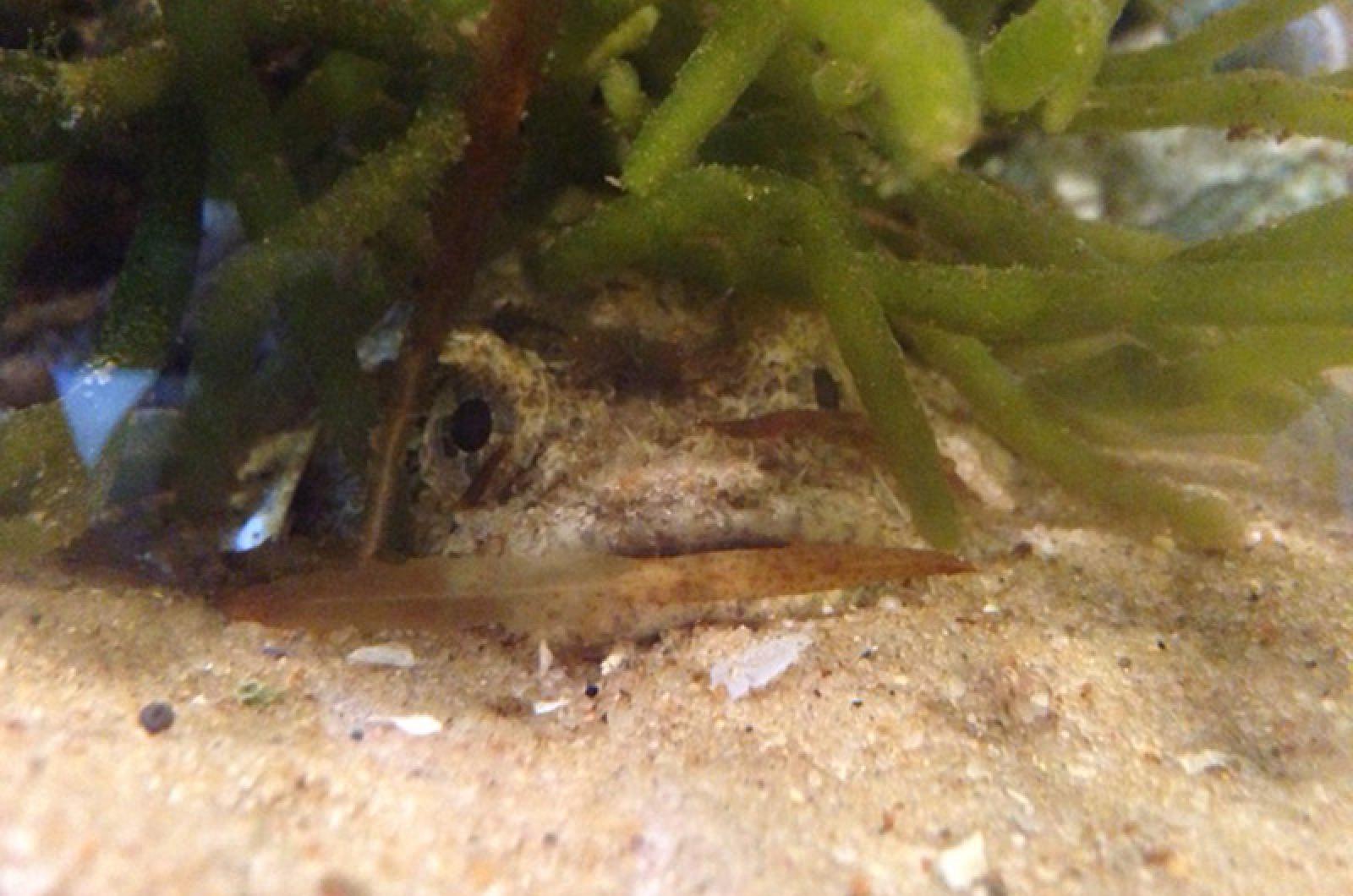Looking for something scary? Go deep. Below the waves live creatures that some call nasty, with visages that may frighten. One such denizen is the oyster toadfish. This beast definitely will not win any beauty contests, which may be considered lucky, since it need not worry about beauty queen enthusiast Donald Trump giving it a big wet kiss.
Its large, fleshy mouth is just one of its features that might be considered unpleasant. According to “Life in the Chesapeake Bay,” a marine resource book, oyster toadfishes “may lay claim to being the ugliest fish in the Chesapeake Bay, a vision for nightmares, slimy and ragged with fleshy flaps hanging from their lips and over their eyes, covered with warts and with threatening, wide-gaping jaws armed with sharp teeth.”
Their teeth are powerful and can crush shellfish and crustaceans, so be warned if you find them on your line when bottom fishing. Though edible, these fish are not usually consumed by people. Sharks, however, show no hesitation to make a meal of them.
We all — well, most of us — know that we shouldn’t judge a book by its cover and that beauty is only skin deep, so let’s look at this fish’s other qualities, starting with its parenting.
Accolades go to the male toadfish for being a devoted dad. A male toadfish prepares and maintains the neatness of its nest, guards and protects the eggs, and nurtures its young — behaviors by no means common among fish species. The female has a very limited role, only laying eggs before she moves on. Her eggs, at 1/5 inch, are also notably large for fish.
If his domestic qualities weren’t enough, the male has learned that music hath charms to soothe a savage breast. Female toadfish are lured to the nest to lay those eggs by the male’s sultry song. Male toadfish produce a foghorn-like sound during mating season (April through October) using muscles attached to their swim bladder. Before you dismiss their underwater karaoke as an ugly imitation of melodious songbirds, consider and admire this fact: the male toadfish’s muscle movement is known as the fastest vertebrate muscle movement in the animal kingdom.
These fish can be found from Maine to the Caribbean, and are in our waters. One of these bottom-dwellers was recently brought to Felix Neck for the Marine Life Tank, so if you want to see one of these oceanic wonders it can be found lurking among the rocks and seaweeds, nestled in the sandy bottom of the tank.
Toadfish are survivors, known for their heartiness and ability to thrive in waters with diminished quality. They even travel well. Back in 1998, two fish caught off of Wood’s Hole joined John Glenn on a Space Shuttle mission during which they were used to study the effects of microgravity on balance systems. They have also been part of medical studies, since their ear canals are similar to humans.
Truly a remarkable species, if you can get past its ferocious façade. Other names for the toadfish include “dowdy,” “ugly toad,” and “bar dog,” which almost sound like what you’d expect to hear the Donald utter during a press conference discussing this fish or women he doesn’t find attractive.
The lesson is certainly that beauty is in the eye of the beholder. This fish has no problem finding a mate, and has numerous admirable qualities. Some will always consider it hideous and hope it, along with other so-called deplorable species, will stay out of sight, rearing its ugly head as infrequently as possible.
Suzan Bellincampi is director of the Felix Neck Wildlife Sanctuary in Edgartown, and author of Martha’s Vineyard: A Field Guide to Island Nature.




Comments (2)
Comments
Comment policy »